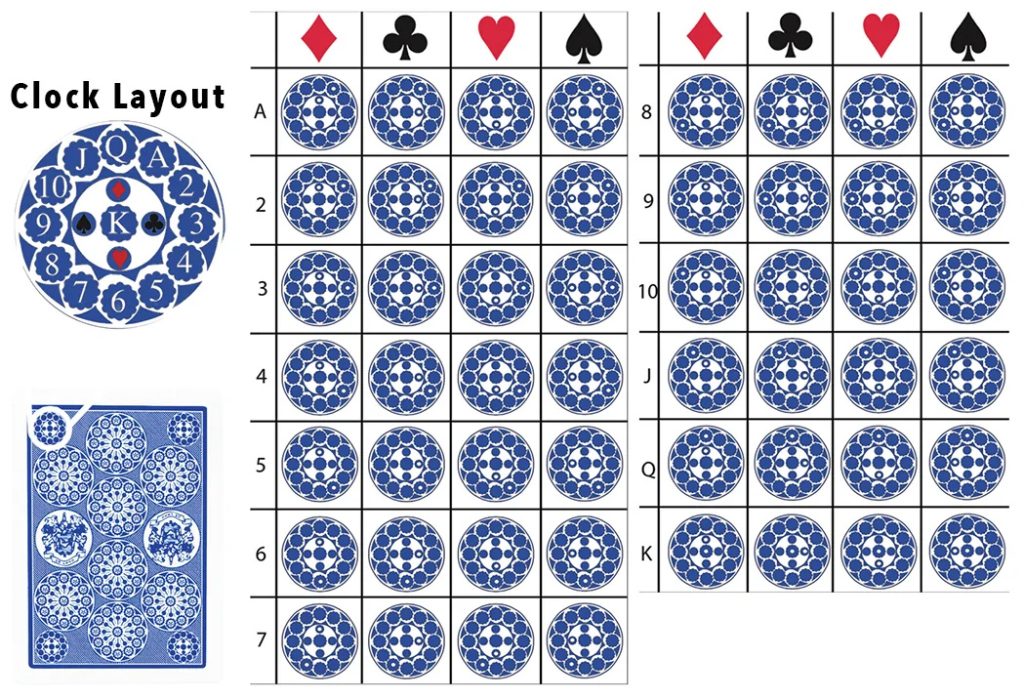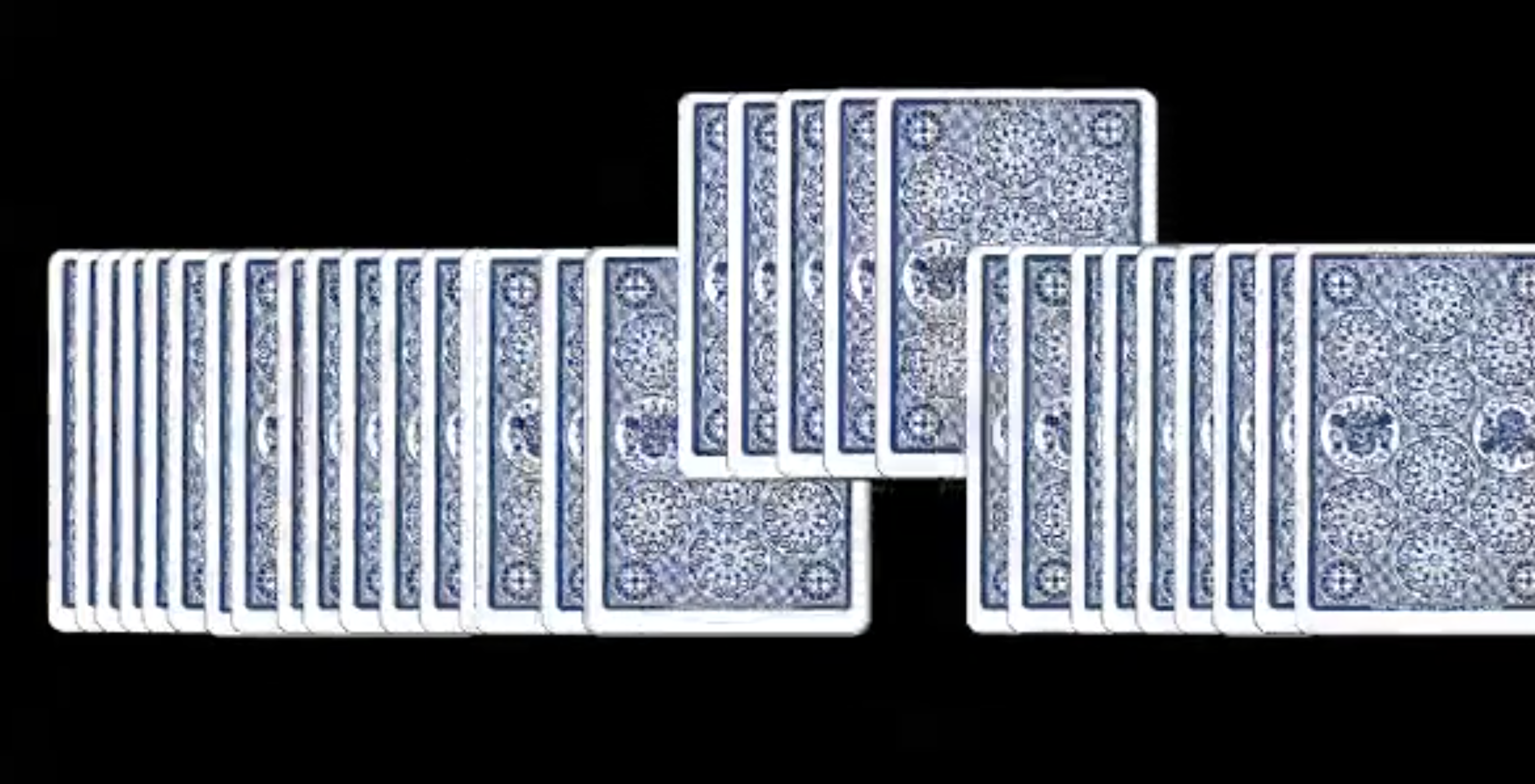


CLOCK A: Tells the card on TOP of deck
CLOCK B: Tells the card on BOTTOM of deck

CLOCK C: Tells the location of ALL the DIAMONDS
CLOCK D: Tells the location of ALL the CLUBS

CLOCK E: Tells the location of ALL the SPADES
CLOCK F: Tells the location of ALL the HEARTS

CLOCK G & H: Show the number of cards on the table after deck has been cut.
CLOCK I & J: Show how MANY cards have been cut.
This deck is tapered. One end of the cards is cut wider than the other. The easiest way to tell is by looking at the white border of the cards. You will notice that one end is narrower than the other. Remove one card from the deck and rotate it end for end (180 degrees) and place it back into the center of the deck. You will be able to feel the spectators card is wider at the tapered end of the deck. you may shuffle or cut the deck as many times as you wish. While you run your fingers along side of the deck in an upward motion, you will be able to strip out the rotated card.


Fan out the deck with all the cards facing the same direction, showing your audience all the cards are different.
They will believe it’s a normal deck of cards.

Have your spectator select and remove any card from the deck.
Ask them to memorize that card and concentrate on it.






How to Read Any Card From Its Back










Mis-IndexedAce of Diamonds


Learn It

Standing Routine

Introduction to Deck